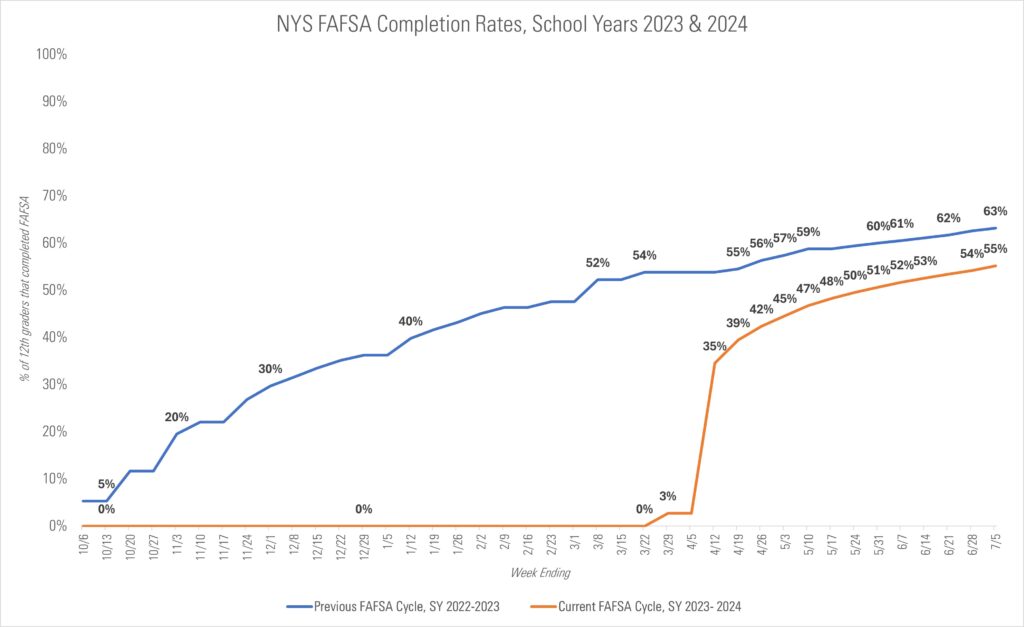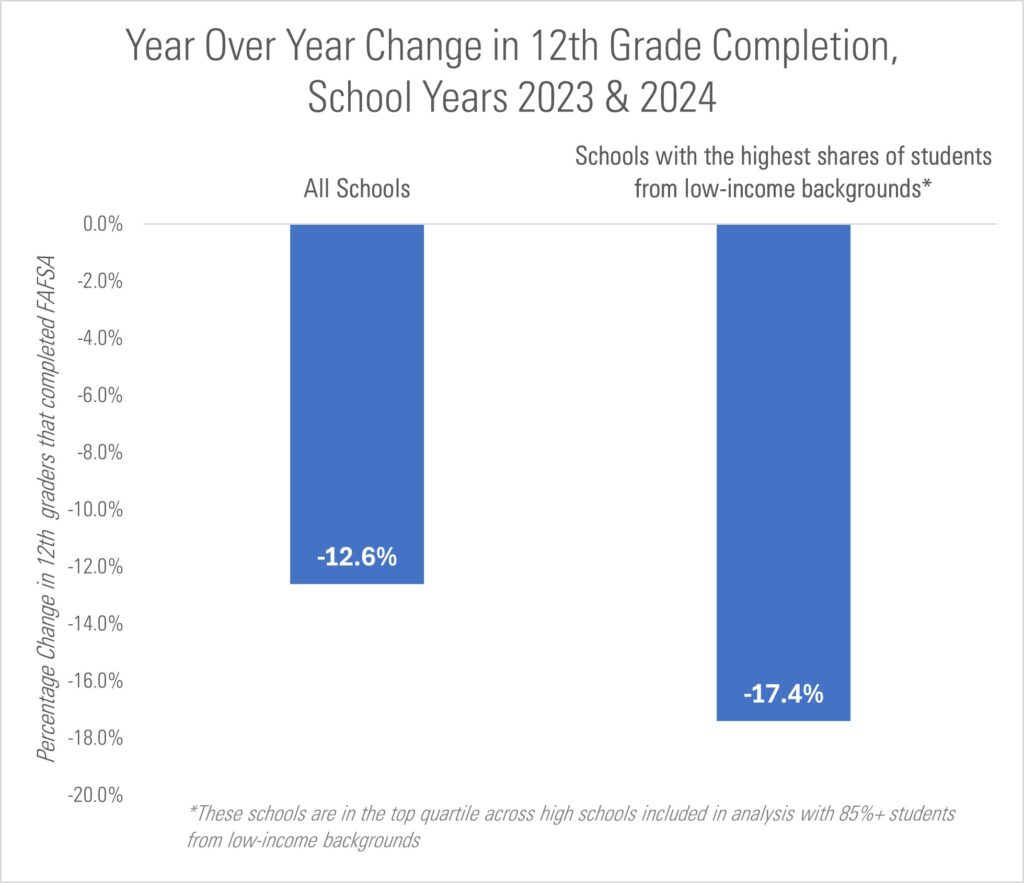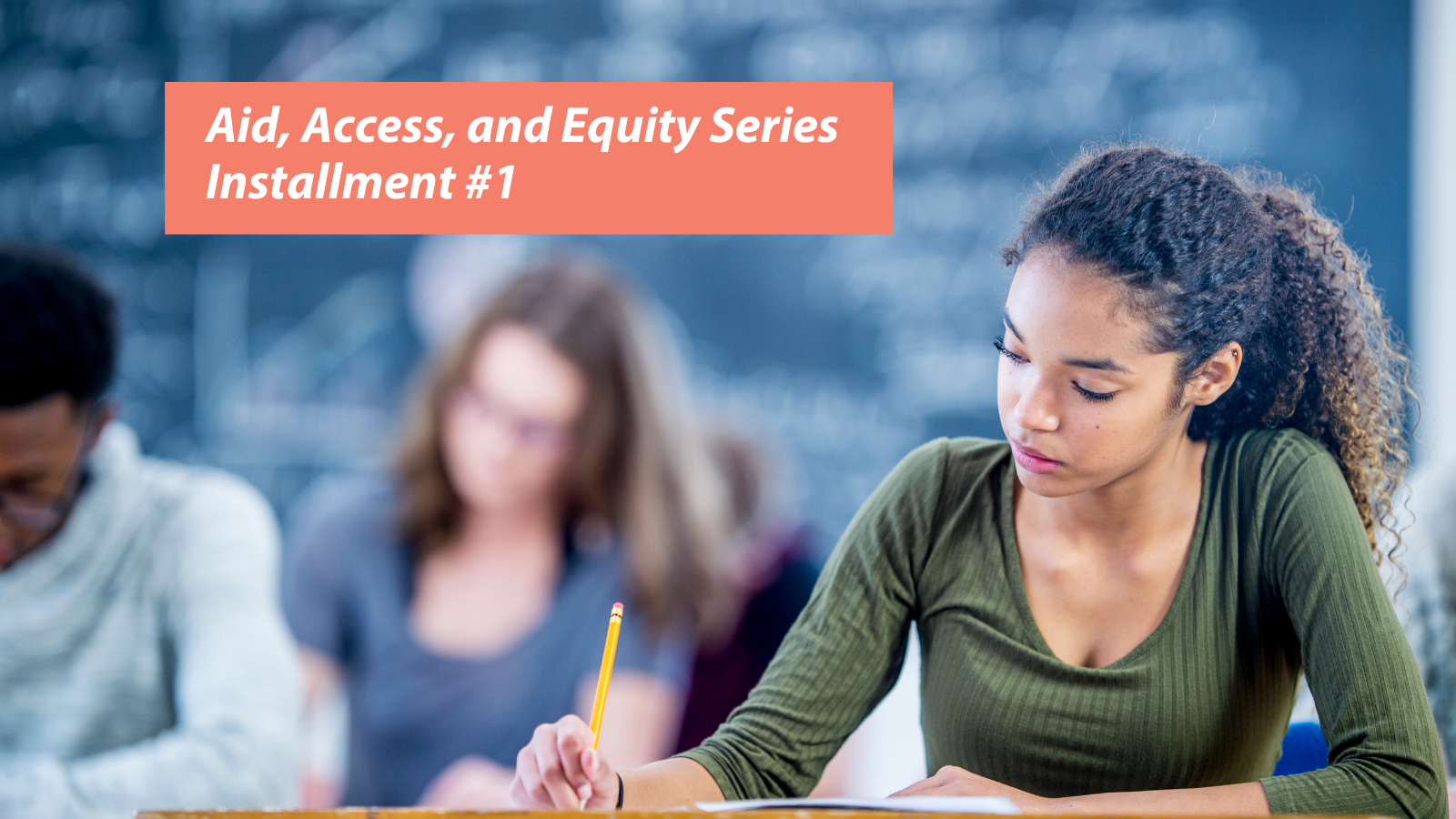Every student should have the financial support to make their postsecondary goals possible, which starts with the successful completion of the Free Application for Federal Student Aid (FAFSA). This past school year, the US Department of Education (ED) rolled out a new form of the application, dubbed “Better FAFSA” as part of a package of changes to the federal financial aid system meant to make applying and receiving aid not only easier, but also inclusive of many more students. Alongside a shorter and more streamlined application, ED expanded max Pell grants to an estimated 75,000 more students in New York. Despite this intent, instead of a simpler, easier or “better” FAFSA cycle in school year 2023-2024, it was clear early on that students and counselors were in for a chaotic cycle. From a shortened cycle that started after winter break, to major delays in application processing, errors, and technical glitches; some students ultimately had to make their college decisions without a major piece of information: their financial aid options.
The results are no surprise, FAFSA completion rates in New York State public high schools were lower this school year than last year. ED did not begin processing and accepting applications until the second half of the school year, far later than the usual cycle that starts in October. The completion rates for previous years follow a steady rise over the school year, as schools typically engage in FAFSA completion nights, one-on-one counseling, text and email campaigns, and other activities to support seniors beginning in the fall. While completion rates in school year 2024 were lower overall at 55% (from 63% in school year 2023), schools made the most of the spring to compensate for the late start yet ended the school year 8 percentage points lower than last year. Last year, the New York State graduating class of 2023 left $226 million in Pell grants on the table. A lower completion rate has real implications for students and may result in students deciding not to attend college upon high school graduation, considering students who complete the FAFSA are more likely to enroll in college. To that end, lower completion rates have statewide implications too – a postsecondary degree can serve as a vehicle for economic security for students who are often denied economic opportunities.

(Data note: This graph compares the completion rate, or the percent of 12th graders that completed the FAFSA, in school years 2023 and 2024.)
In addition to lower completion rates this year, we continued to see equity gaps. Schools with the greatest shares of students from low-income backgrounds saw a higher decrease in the number of 12th grade students completing the FAFSA this year, compared to all schools in the state. While the state saw a 12.6% decrease in seniors completing the FAFSA this year, schools with 85% or more students from low-income backgrounds experienced a 17.4% decrease. This follows historical trends, schools with the highest shares of students from low-income backgrounds have much lower FAFSA completion rates than schools with the lowest shares of students from low-income backgrounds.
 Data note: This graph compares the percentage change in the number of 12th graders that completed the FAFSA from school year 2023 to school year 2024.)
Data note: This graph compares the percentage change in the number of 12th graders that completed the FAFSA from school year 2023 to school year 2024.)
These equity gaps are unacceptable, hurt students who need the aid the most, and we know schools can do better. There are schools with 85%+ students from low-income backgrounds that did incredible work to increase their completion rates in the midst of a challenging year. Despite the shorter cycle, through the technology issues, errors, lack of information, and lowered morale, 25% of schools with the highest shares of students from low-income backgrounds managed a higher completion rate in the 2024 cycle than the previous cycle.
As New York moves to implement a Universal FAFSA policy that will require schools and districts to provide students with support to complete the FAFSA, or the NYS Dream Act application—there is an opportunity to course correct. Implementing Universal FAFSA offers a golden opportunity to not only improve FAFSA completion rates for all students, but to restore some of the trust in the financial aid system lost in this challenging year. Universal FAFSA, if strategically and intentionally implemented, can close the equity gaps in FAFSA completion for schools with the highest shares of students from low-income backgrounds, the students who most need this financial aid to make their college dreams come true.
First-generation students, students from mixed-status families, and students with high financial need deserve all the help they can get to make the transition to college as seamless as possible. Completing the FAFSA is a critical step in that process. As ED continues to face challenges in rolling out Better FAFSA this year, and New York State moves into implementing a new Universal FAFSA, EdTrust-New York will ramp up support for students and schools to help implement Universal FAFSA in partnership with community-based organizations focused on college access and financial aid support, college counselors, districts.
To learn more about this work, stay tuned for our upcoming blog series: Aid, Access, and Equity, where EdTrust-New York will explore students’ experiences with the Better FAFSA and opportunities for Universal FAFSA implementation, including ideas from students and counselors, and what concerns – and hopes – they have for this new statewide policy. Sign up for updates here.

